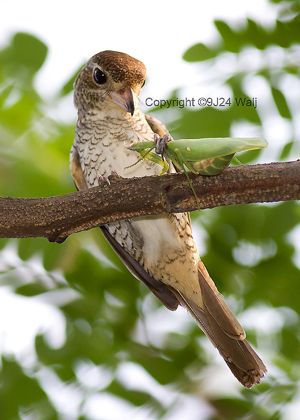Walad Jamaludin’s image of a juvenile Tiger Shrike (Lanius tigrinus) was taken on 25th October 2009 at Jurong in Singapore (left).
The shrike is clutching a praying mantis around its thorax just below the first pair of legs that are armed with spines for the grasping of prey. The triangular shaped head of the mantis has been ripped, probably the first thing the shrike did when it caught the mantis.
In earlier posts, the shrike usually lodges the prey between its feet and the perch before dismantling the prey. Not so here as it has a firm grasp on the prey and is supported on the perch by the right leg and the ‘heel’ of the left leg.
What the shrike actually did to the mantis after ripping the head was not documented. Probably it dismantled the various parts for swallowing.
This post is a cooperative effort between NaturePixels.org and BESG to bring the study of bird behaviour through photography to a wider audience.










2 Responses
What a great capture. Wonderful photo and pos ton teh Tiger Shrike.